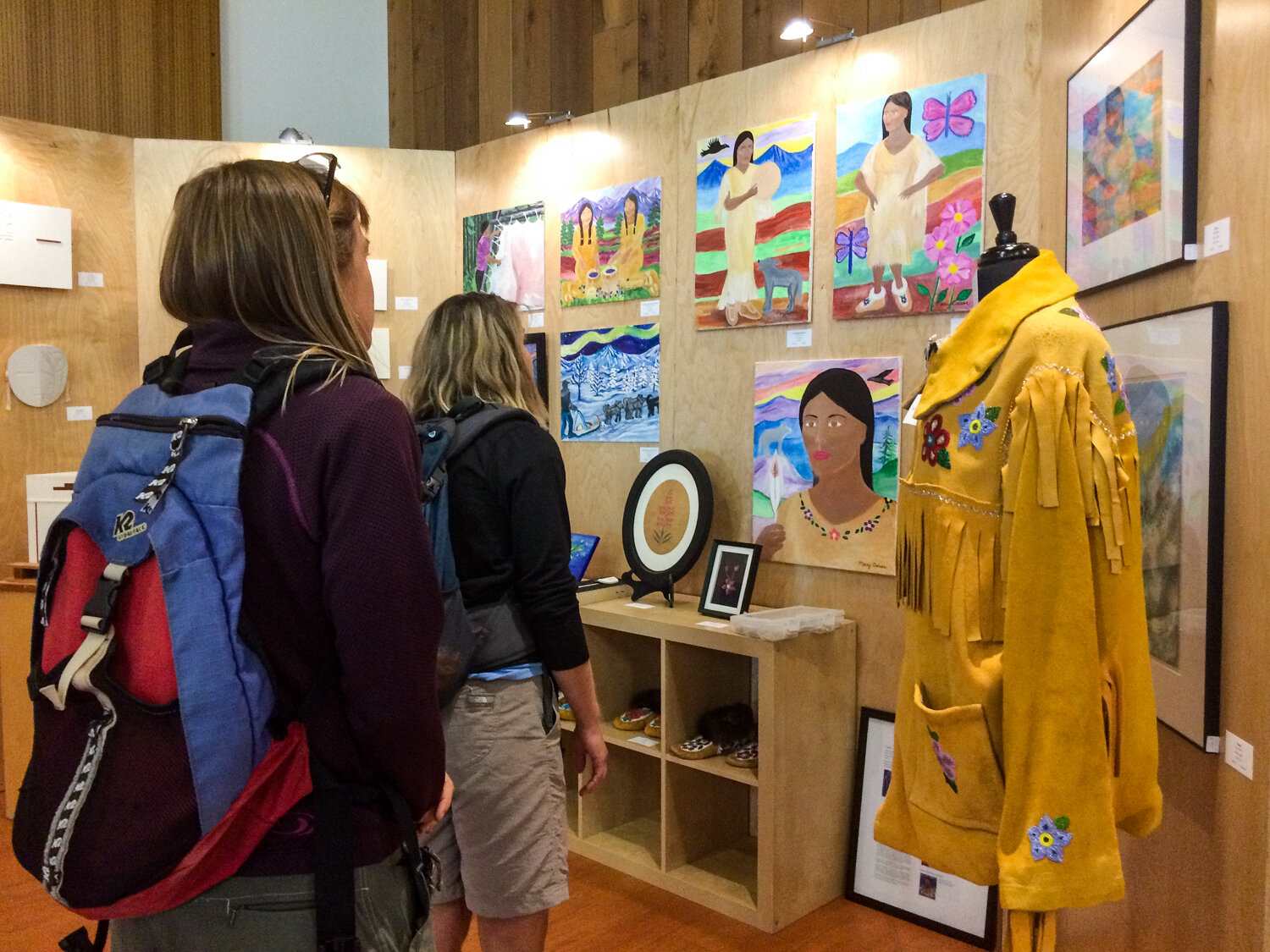Cultural connections
Katie Jacobs
From the visual art to the ceremonial songs and dances, Whitehorse’s eight annual Adäka Festival was a culturally rich environment, demonstrating Indigenous art from all over the world.
Behind these handmade objects are stories of shared knowledge and memories.
George Roberts, 70, says he decided to research knife-making when he realized that it has become a lost art form, and because he could not find a high-quality knife at a department store for hunting and fishing. He spent several years connecting with blacksmiths and leather makers, and researching steel to create his own art. Over 40 years, he has travelled and shared knowledge with other Indigenous communities.
Roberts, who identifies as Cree, says knives not only connect First Nations but all people since it is a tool everyone uses. An example is an ulu, a round shaped knife used by Inuit women in the Arctic, for skinning mammals. Roberts says it is important to share this knowledge, else it becomes lost.
The knife in the picture above is a Beluga whale design Roberts learned from the Inuit. He says sharing his work and knowledge “opens a door” to Indigenous communities through respect. He adds he is called the “Great Knife Shaman” by the Inuit people in the North after forming a connection with them for five years. “Let’s just say my hair was short then, and it was totally standing up,” says Roberts. “That is an honour and something I hold in my heart.”
For Piona Keyuakjuk, 30, carving is a family tradition, which he has practiced for 15 years. He learned through watching his father, Moses, carve by hand. Thus, he prefers using hand tools instead of machines. Keyuakjuk recalls hunting with Moses and watching him run fast. His father died 10 years ago.
Keyuakjuk says carving helps him concentrate and allows him to create his own work and style.
Ali Khoda, 23, is a painter who was born in Iran and learned how to paint from older relatives. He says his biggest influence is his uncle, who would make him stare at objects, like flowers, to build up his visual memory. Khoda says he was taught that his ancestors come to life through art.
For Diane Olson, 57, beadwork connects her with her heritage. Still, she uses her own style, like wire-working in stones. Olson says she grew up watching her mother and grandmother and started to bead herself in her mid-teens. She didn’t bead as much after leaving for school, but she felt she was missing out every time she would see her mother bead and wanted to learn from her to carry it on. She fell in love with the craft four or five years ago after joining a beading group. She says she is trying to share her knowledge to her 10-year-old granddaughter and is hoping to teach classes after she retires.
Florence Moses, 50, says she learned beadwork by sitting and watching her mother and grandmother sew. Moses explains that beading is part of her “genetic memory,” something that is in you and part of who you are. She says that when an Indigenous person loses their art, they also lose their stories, skills from their ancestors, cultural connectivity with their children and grandchildren, and identity as Indigenous men and women.
Moses’s own pieces, such as the Babiche bag above, always tell a story from her ancestors. She says this Babiche bag is one of two made about her grandfather’s story on the Northern Tutchone people. During the winter when food was scarce, they would attract fish by building fires along the shores of Ethel Lake. The men would go ice fishing and throw the fish to shore so the women could prepare the meal.
Moses says the blue colour represents the water, the brown with the beadwork shows the flowers and medicines that grow on their land, and the orange and red beads represent the salmon. “To be able to carry on an art form that my grandmothers have done for generations and generations … an art form that tells us who we are, where we come from, so that we have that self-pride and self determination to carry forward, that’s why beadwork is very important,” says Moses. (Florence Moses close up)











